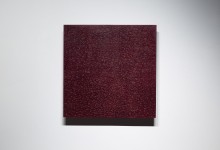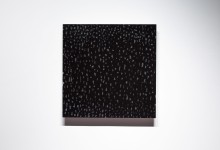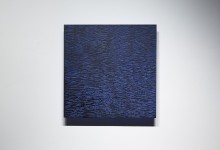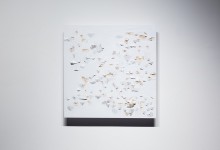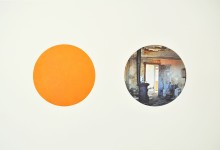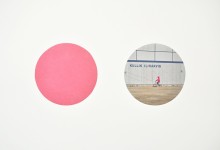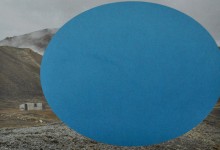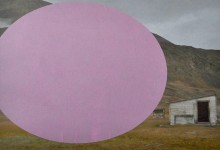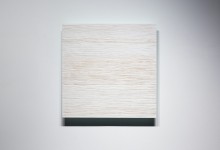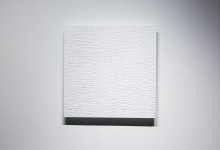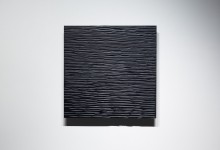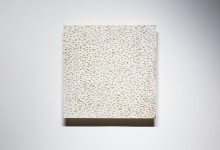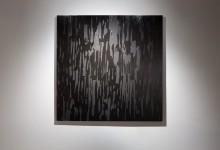Opening reception: Saturday, May 6, 2017 from 3-5 p.m.
Jessica Houston: This Mountain
Art Mûr, Montreal (QC)
Text by L. Sasha Gora
Jessica Houston’s most recent works look north. What is north? Where is it? Is it a fixed place, or something else?
Her second solo show at Art Mûr brings together paintings, a sound sculpture, and chine collé prints, all of which reveal a fragile, fluid, and often fractured, north.
An iron ore stone becomes a speaker, playing recordings of interviews and singing, and expanding the physical presence of the stone. The exaggerated textures of the paintings give them, too, a sculptural and documentary feel. They record how actions—breaking and piercing, pushing and pulling—disrupt and transform the paintings’ surfaces. By resembling patterns one finds in the wild—scratches across the surface of a rock, uneven waves that form on melting snow—they unhinge any clear distinction between what is natural and what is made.
Made with a printmaking technique that binds together distinct papers, the chine collé prints begin with photographs Houston took of Baffin Island. She then combines the images with coloured paper, creating traces of the process of extracting and replacing parts of a scene, and an equal awareness of both what is present and absent.
Some are composed of double circles, like looking through binoculars. In Business As Usual, a decaying interior—peeling wallpaper, a rusted stove—is juxtaposed with the soft glow of a yellow circle. This continues Houston’s ongoing use of colour to question the particulars of perception.
Heritage of All, White with Greed and Iron, and The Spaces we Breath, Houston’s titles read like lines of a haiku. Composed as prose, they are also confrontational, mapping out the cultural and environmental impacts of the extraction of resources in the Arctic. We witness scenes of violent decay, and yet simply carry on, like Business As Usual. In What Nations Come and Go a pale purple oval nearly fills the frame, revealing only in the very far right a simple cabin in front of a rocky incline. A similar imposing cloud of colour, this time blue, dominates the landscape in Mapped, Claimed, and Evaluated.
The north is just as much an idea as it is a place, and is one that looms large in the Canadian imagination. There are few better examples than Glenn Gould’s The Idea of North: “But like all but a very few Canadians . . . I’ve had no direct confrontation with the northern third of our country . . . the north has remained for me a convenient place to dream about, spin tall tales about sometimes, and, in the end, avoid.”1 But Houston has gone north. The north she depicts is not faraway. It is no longer convenient to just dream about. The north Houston shows us is one that wears the signs of climate change and pollution, of the extraction of natural resources and the colonization of peoples. Houston’s north is uncertain and fragile, and warrants as close of a look as we can get.
1. Gould, Glenn. ‚The Idea of North.’ Glenn Gould’s Solitude Trilogy: Three Sound Documentaries. Toronto: CBC, 1992.




